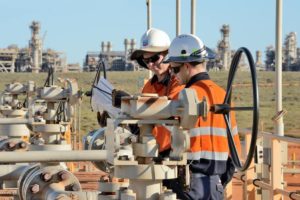Solar PV and wind are set to lead the largest increase in new renewable capacity ever this year thanks to stronger government policy and energy security fears – but Australia risks being left behind.
The International Energy Agency’s (IEA) Renewable Energy Market Update – June 2023 finds that renewables are on course to shatter records, with new renewable power capacity to jump by a third this year.
That growth will continue well into next year, with the world’s total renewable energy capacity rising to 4,500 GW, equal to the total power output of China and the US combined.
But alarming numbers released earlier this week suggest clean energy investments in Australia are slowing down, suggesting the country may be poised to lose out in the race to become a renewables superpower.
2023 set to be a bumper year
The IEA report finds global renewable capacity additions will jump by 107 GW this year, the largest absolute increase ever, to a total of more than 440 GW. That expansion is occurring across major world markets, the IEA says.
Solar PV additions will account for two-thirds of the year’s increase in renewable capacity, and are expected to keep growing in 2024.
The massive uptick in solar PV generation is occurring across various scales, from investments in large-scale plants to the rapid growth of rooftop solar – a situation the IEA says is linked to higher electricity prices.
Wind power additions are also rebounding this year, growing by almost 70% year on year after a few years of sluggish growth. That growth is in part due to the completion this year of various large-scale projects put on hold by Covid-19 restrictions in China and constrained by supply chain issues in Europe and the US.
IEA Executive Director Fatih Birol said this stunning predicted performance is linked to both the energy security crisis of the past year and major policy measures, including the US Inflation Reduction Act and India’s major renewables push.
“This year, the world is set to add a record-breaking amount of renewables to electricity systems – more than the total power capacity of Germany and Spain combined,” said Birol.
“The global energy crisis has shown renewables are critical for making energy supplies not just cleaner but also more secure and affordable – and governments are responding with efforts to deploy them faster.”
Growth across world markets
The report found that growth was occurring across major world markets, though China continued to charge ahead, set to account for almost 55% of global additions of renewable power capacity in both 2023 and 2024.
The forecast for renewable capacity growth in Europe has been revised upwards by 40% from before Russia’s invasion of Ukraine. The IEA says that boost is linked to countries shoring up their energy security by boosting solar and wind investments to reduce their reliance on Russian natural gas.
That’s borne out in the fact that European countries introduced more policy and regulatory changes to ease new project permitting in the past eighteen months than in the entire previous decade.
EU electricity customers are thus set to have saved an estimated €100 billion between 2021 and 2023 thanks to newly installed solar PV and wind.
Meanwhile, manufacturing capacity across all solar production segments is expected to double to 1,000 GW by next year, led by China but with supply diversification across Europe, the US and India.
Based on those trends, the world will have enough solar PV manufacturing capacity in 2030 to comfortably meet the level of annual demand envisaged in the IEA’s Net Zero Emissions by 2050 Scenario.
Better policy needed
Birol said the report was heartening, but meeting renewables targets would require stricter policy and rapid responses to technological problems, including unwieldy grids.
“Achieving stronger growth means addressing some key challenges. Policies need to adapt to changing market conditions, and we need to upgrade and expand power grids to ensure we can take full advantage of solar and wind’s huge potential.”
The report also noted that further growth in 2024 would depend on governments providing greater policy support to address permitting and auction design challenges for new projects.
That’s important, because policy uncertainties and volatile prices left one-sixth of renewable energy auction volumes unallocated in 2022.
Wind turbine supply chains, too, are not growing fast enough to match accelerating demand in the medium term.
Transition accelerating, but Australia does not appear to be keeping pace this year
The new data adds to a growing corpus of evidence that the renewables transition is kicking into gear.
An IEA report in May found investments in clean energy were rapidly outpacing fossil fuel spending, with investments in solar poised to overtake oil for the first time ever.
That report said the world would invest more than US$1.7 trillion in renewables, EVs, nuclear, grids, storage, low-emissions fuels and energy efficiency this year.
Closer to home, though, a major slowdown in clean energy investments in the first quarter of this year may be a worrying sign that Australia is not keeping pace.
A Clean Energy Council report earlier this week showed that no new renewable generation projects reached financial close in the first quarter of this year.
It said the only clean energy project to close in that period was a single 200MW/400 MWh big battery at Rangebank, in Melbourne’s south-east, worth $400 million. That’s a dramatic fall from the previous quarter, and a rolling twelve-month quarterly average of $1.6 billion.
(Ed: ICA has since advised that Pacific Partnerships achieved financing close of the Glenrowan Solar Farm in March 2023).
Still, CEC chief executive Kane Thornton said the alarming slow-down of clean energy investments in Australia was a consequence of a “variety of headwinds that are undermining confidence,”
These included global competition driven by foreign energy policy, grid constraints, supply chain and workforce issues and unwieldy planning and approvals regimes.










